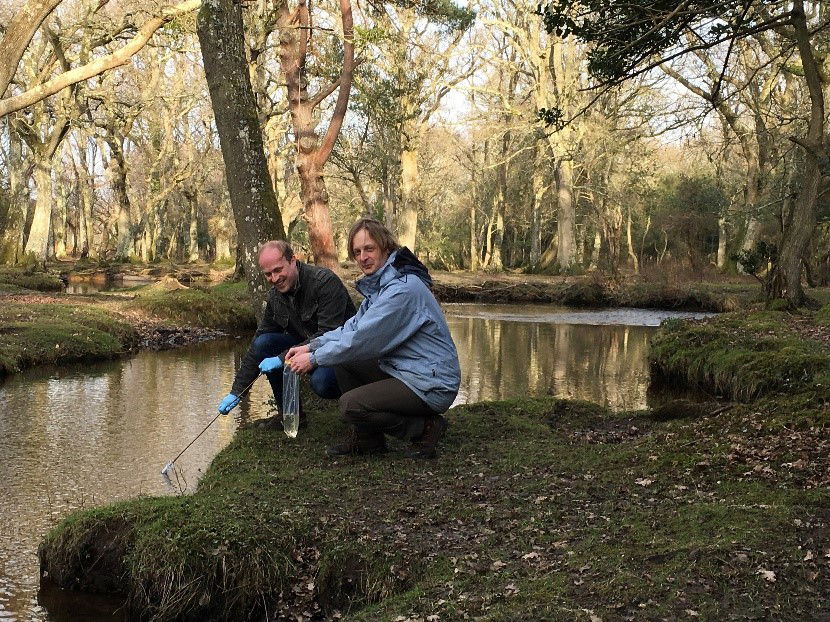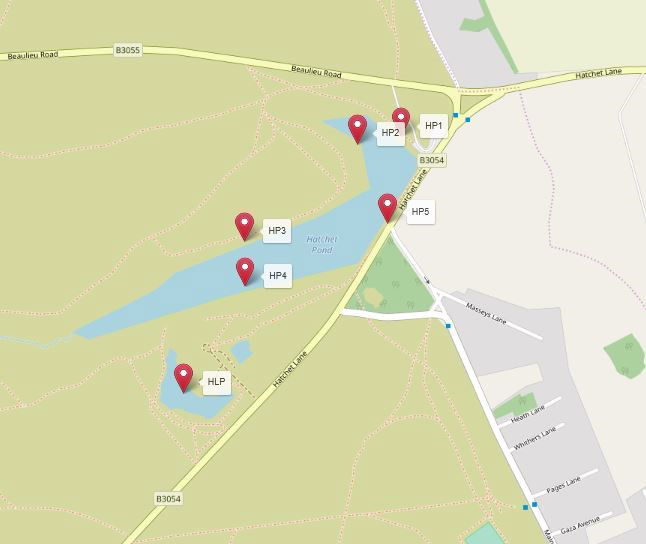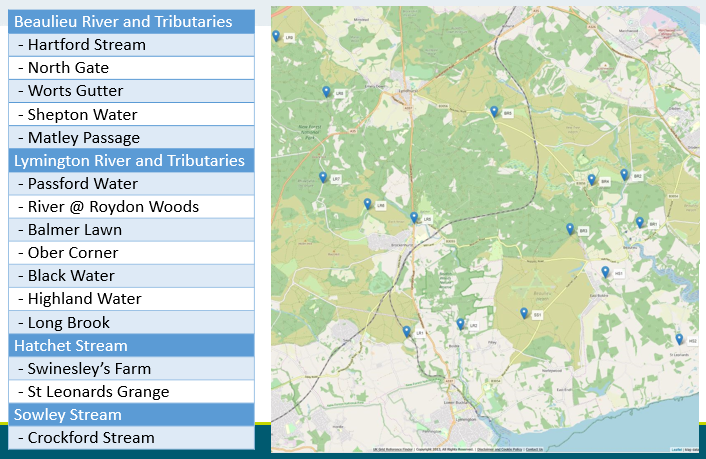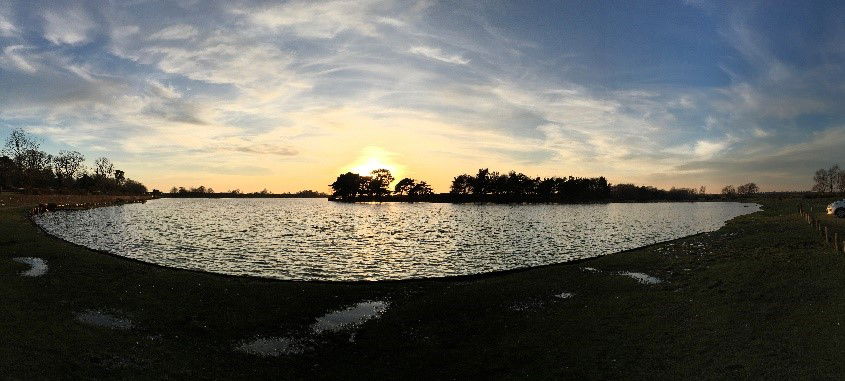New Forest fish surveys using eDNA
1st March 2019
The New Forest is exceptionally important for its freshwater wildlife, and a new fish eDNA survey will help us keep it that way
Many New Forest ponds, lakes, and headwater streams are in better condition than is usual for the lowland Britain because a large part of the surrounding land is made up of uncultivated habitats which have been managed traditionally for hundreds of years. We know this because of the number and rarity of freshwater species found in the New Forest.
However, there are issues and threats, which mean that currently none of the Water Framework Directive monitored waterbodies are classified as having High ecological status, and many important smaller bodies of water are only partly monitored, or not monitored at all. Without this monitoring, it becomes difficult to assess the outcome of management actions designed to restore, manage and protect habitats and species; and biologists are worried that some of the special freshwater features of the New Forest’s freshwaters could be in decline.

This is a real concern because elsewhere in Britain, Freshwater Habitats Trust’s long-term monitoring has shown that waterbodies, even in the most protected landscapes (SSSIs, NNRs), have declined in quality, and lost protected freshwater species. It has also become clear that a major stumbling block to protecting freshwater biodiversity is the lack of regular monitoring data for both species and habitats, especially for smaller waters (ponds, streams, ditches). This means that declines are detected only after they have passed the point of no return.
The question is, how do we gather credible evidence, over a large number of sites, to cover ecologically meaningful taxonomic groups? Although citizen-science is a potential solution to providing more data, engaging people with freshwater biodiversity is difficult because of the ‘taxonomy gap’: many freshwater species are difficult to survey and hard to identify, and collecting technically credible data requires years of training and practice.
Environmental DNA
Environmental DNA (eDNA) could transform this problem. In this approach DNA, which all freshwater species release into the water, is detected in easily-collected water samples. Over the last 5 years, working with Defra and Natural England, Freshwater Habitats Trust has established the world’s first national, volunteer-based eDNA monitoring programme for a protected species, the Great Crested Newt. The data now provides the basis of the UK’s reporting on this species to the EU.

Now Freshwater Habitats Trust is working with NatureMetrics, an eDNA specialist laboratory, to test and apply this revolutionary method to a wide range of lesser-known and difficult-to-survey species, and across the full range of freshwater habitats. This means that, now, anybody who can collect a water sample can potentially provide taxonomically reliable data about freshwater animals and plants.
This approach has two major benefits for freshwater biodiversity conservation:
(i) It enables many more people to collect reliable data, so a far greater proportion of freshwaters can be reliably surveyed,
(ii) It offers potential for a wide range of species and uncharismatic groups to be recorded consistently for the first time, kick-starting policies and action for their protection.

An eDNA approach to monitoring freshwater fish
We will begin the development of this approach in the New Forest, focusing on recording fish species using eDNA. Following discussion with the Environment Agency and Forestry Commission we have compiled a list of 21 sites where:
(a) We can compare eDNA techniques with traditional surveys (electrofishing or netting)
(b) Additional information on fish communities could be useful outside of the formal monitored network (e.g. headwater streams).


Surveys using eDNA were completed on Hatchet Pond and Hatchet Little Pond on Saturday 26th January 2019. We then collected the remaining 15 samples, from the Beaulieu River, Lymington River, Crockford Stream and Hatchet Stream, with a group of volunteers on the 13th and 16th February 2019.
We’ve sent the samples off to be analysed and will be able to bring you the results in the near future.
Find out more
- Read more about the New Forest, and why it is a Flagship Pond site
- Take a look at our work on Great Crested Newt eDNA and how we set up a national citizen science eDNA monitoring project

